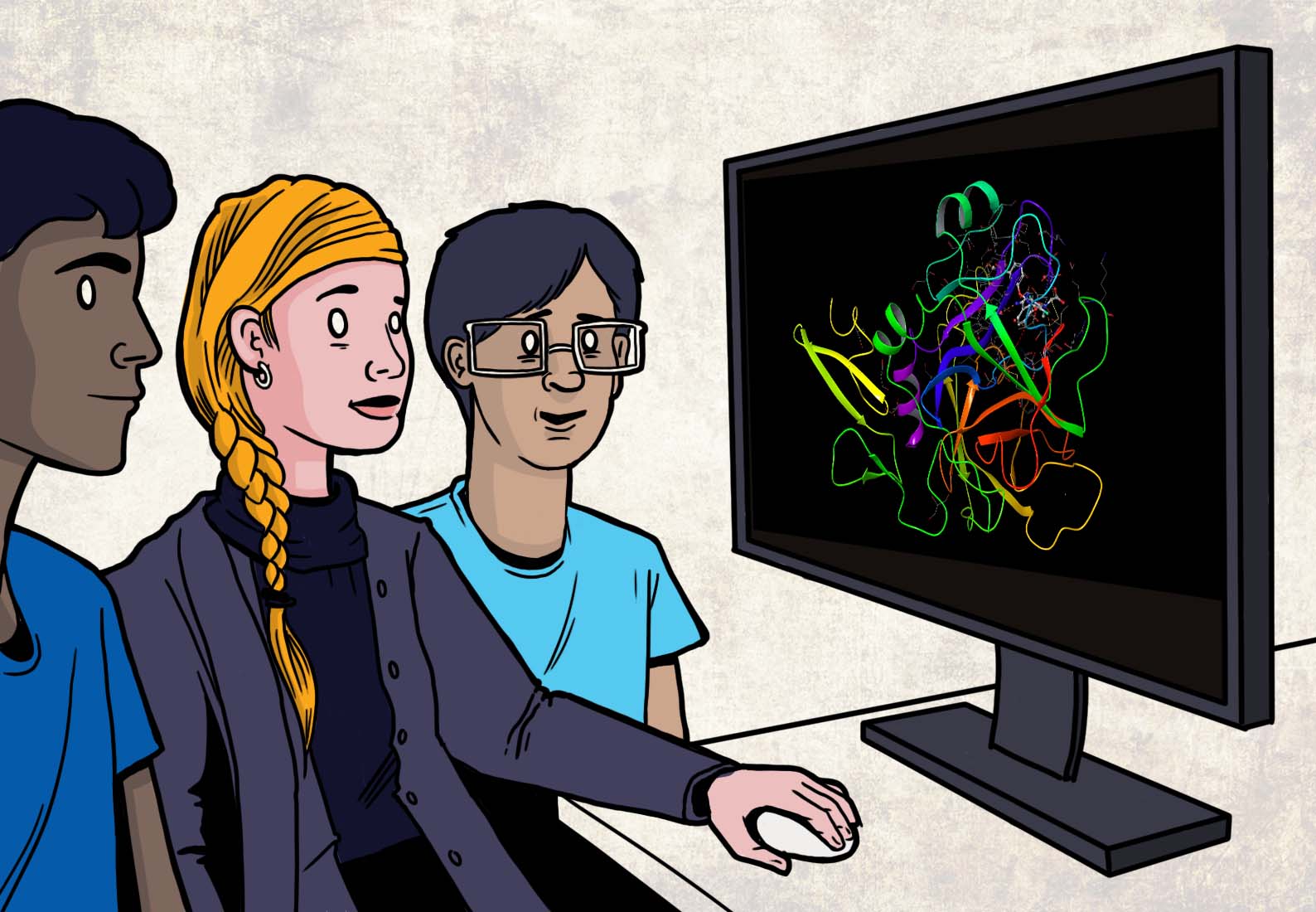Inside Dr. Elizabeth Romano’s biology classroom, you are more likely to find high school students experimenting with high tech tools than flipping through pages in a textbook. As a biology faculty member at The Governor’s School at Innovation Park, Dr. Romano introduced Schrödinger’s professional-grade molecular modeling software to her high school students to use as part of their year-long research projects. By leveraging the software, students not only learned how biological interactions occur, but also how to evaluate current pharmaceuticals and develop novel therapeutics. Three of Dr. Romano’s graduating upperclassmen presented the culmination of their work with the software at Schrödinger’s annual Educator’s Day on June 22, 2022.
Here, Dr. Romano shares more about the software’s inherent educational value and describes how students used the tool in their research projects.
Most scientists working in drug discovery today would agree that a logical first step in designing new drugs is to narrow down targets computationally. Computational discovery saves time, money and resources that would otherwise be spent in a wet lab trying to achieve the same outcome at a greater cost.
I first learned of Schrödinger’s molecular modeling software from a colleague. She had used the tool for her drug design and development research in conjunction with testing and confirming reactions in a wet lab environment. We decided as a program to try introducing the software to high school students in our classroom. When COVID-19 hit and everything became virtual, we offered the few software licenses we had to some of our students who had focused their mandatory year-long academic research projects on finding novel therapeutics. For these projects, students researched drug discovery and design and examined how therapeutics interact with other proteins in a cell, resulting in different types of cellular outputs. Their goal was to identify proteins and ligands that should be further researched in a wet lab environment.
Students started by asking a novel scientific question and forming a hypothesis based on primary literature and then they completed tutorials to learn how to use Schrödinger’s molecular modeling software. Using this tool, high school students quickly began to understand that the drug discovery process is much more complex and dynamic than simply generating molecules that bind to any type of cell structure. They found that they needed to narrow their focus to specific proteins of interest.
“Gaining access to Schrödinger’s software as a high school student has aided me greatly in both my personal understanding of fundamental biological processes and my formal research pursuits. Being able to independently explore the software while concurrently learning about biological receptors and molecular binding through my courses allowed me to better visualize the physical processes and grasp the principles behind them. Schrödinger’s software has allowed me to apply these concepts in my research, enabling me to create an ideal binding environment suited to my project and compare the binding performances of different molecules as needed. The software also efficiently captures reliable data crucial to the next phase of my research. I look forward to using this software in future academic ventures.” – Iqra Ahmad, recently graduated high school senior from Osbourn Park Senior High School and The Governor’s School at Innovation Park, in Manassas, Virginia.
Students used Schrödinger’s receptor grid to determine where a given molecule binds, which ligands are appropriate, which are not, and how to make modifications. While the projects were distinct, the students were all using the software to model and understand disease pathway interactions, and to develop therapeutic compounds that may affect chronic disease development.
Schrödinger’s software proved useful not only for students’ research, but also as an educational tool. In textbooks, proteins are portrayed as static globs or ribbon structures, which may not make sense until a student sees them in 3D. While most students can memorize the technical information associated with protein binding and molecular dynamics, I found that they had trouble truly understanding the concepts until they saw them visualized through the lens of Schrödinger’s software. This visualization was key to making the concepts “click.”
“Schrödinger was highly useful in my research project, helping me to better understand the process pharmacologists perform in drug testing. Additionally, using Schrödinger’s software exposed me to new concepts that advanced my research, such as the significance of GlideScores, the importance of pH values, and the structures of the various molecules I built in-software. Seeing a visual representation of protein dimerization, specifically with estrogens and their receptor, helped me better comprehend those concepts. I anticipate using this software more in the future as I expand my research within my current field of interest.” – Keren Gonzaga, recently graduated high school senior from Osbourn Park Senior High School and The Governor’s School at Innovation Park, in Manassas, Virginia.
Given the value this tool brought to students in the classroom, our plan is to integrate the software into our research and core classes to underscore the content of our lectures, which is doable thanks to Schrödinger’s web-based platform. The software lends itself to research in many capacities, from a single in silico project to an entire research phase prior to the wet lab work. Our experiences thus far have shown that Schrödinger’s software helps build a better foundation for students in their understanding of chemistry and biology.







